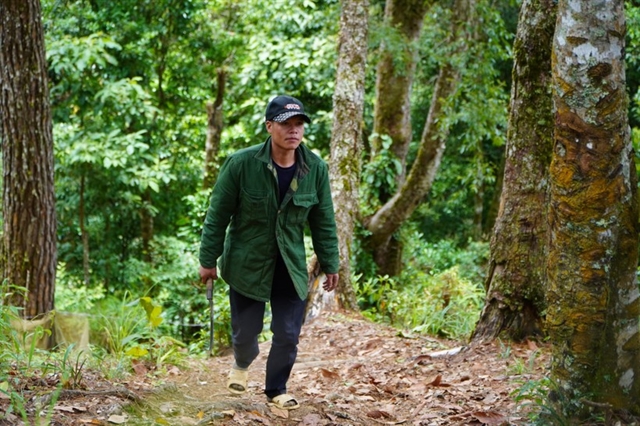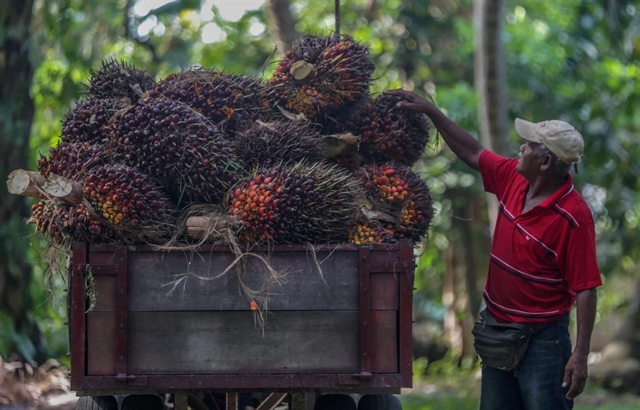 Society
Society


|
| A Dịp goes into the forest to check his wild beehives. Photo giaoducthoidai.vn |
KON TUM - A Dịp, 31, lives in Măng Ri Commune in Kon Tum Province, where honey provides a sweet income to those who put the work in.
For generations, the Xơ Đăng ethnic minority people's livelihoods in Tu Mơ Rông District have been based around these old forests.
The traditional job of breeding wild bees in tree holes has been preserved for generations, Giáo dục thời đại (Education and Times) newspaper reports.
On the holes, all are engraved with the name of the hive owner.
So far, there has never been a hive being stolen because the thief would be punished according to the village regulations.
A Dịp has 10 years of experience in forest beekeeping. He makes a hole about 3-4cm along the base of an old tree before using wooden sticks and mud to seal the entrance to the hole, leaving only a few small points for the bees to enter.
In early summer, people in Tu Mơ Rông District bring plastic bags, axes and knives to the forest to harvest honey.
In early July, A Dục, 63, brought the tools into the forest.
“This is a beekeeping hole I made at the beginning of the year," he said.
"I harvest about two litres of honey. I am going to check the other holes to see the amount of honey obtained,” said A Dục.
A Dục said some people when going to the forest to collect honey, often light small fires to use smoke to repel bees and avoid being bitten.
“However, when using smoke, the bees do not return to that hole later.”
According to A Dục, every year, people will go to the forest to make holes to make nests to welcome the wild bees back.
In March and April, people go to check the beekeeping holes, and then from May to June to harvest honey.
“Earlier this year, I made 10 new beekeeping holes, bringing the total number of holes I own to 50.”
“However, this year the amount of honey collected is less than the previous year.”
One year, he even obtained 30-40 litres of honey.
“In recent years, I no longer have the strength to climb mountains, so I do not go to the beekeeping holes far away. After this year’s honey crop, I will let my two sons take over, and stay at home to play with my grandchildren.
A Dịp has 15 beekeeping holes scattered in the forest.
Of these, eight holes were bought from the village elders for between VNĐ500,000-1,000,000 million each.
“Besides beekeeping, I also work as a security guard for the Ngọc Linh ginseng garden to have a stable income. This year, the honey crop failed, so I could only harvest honey from 7 holes."
He collected two to three litres of honey per hole.
With the selling price of VNĐ500,000/litre honey, I can afford to live with my family and two children going to school with an average income of VNĐ10 - 15 million per crop," said A Dịp.
He said that all 10 guards at Ngọc Linh ginseng garden have beekeeping holes.
According to Nguyễn Minh Trí, Vice Chairman of the Măng Ri Commune People's Committee, the whole commune has more than 500 households and most of them have beekeeping holes in the forest.
According to Trí, people do not choose healthy trees to make beekeeping holes, so it does not affect the growth of the forest.
Some families have dozens of beehives.
From these beehives, some families get from several tens of litres, many up to one hundred litres of honey per crop.” VNS




